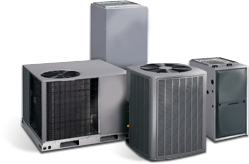Original Blog Post By HGTV (Click Here to View HGTV’s Post)
Improve indoor air quality with no- and low-ozone systems.
Having a tight home envelope is essential for energy-efficiency, but it can also cause poor indoor air quality if air pollutants are not properly filtered out. Pet dander and dust mites in the home can cause allergy and breathing problems, and more and more homeowners are looking for ways to improve air quality for themselves and their families.
Indoor air quality ranks among the most important green-building modifications, and builders and remodelers would do well to look for ways to satisfy this growing customer need.
Whole-home air-cleaning systems are increasingly popular and can be incorporated into almost any HVAC system—whether a new build or a retrofit—and are available in various sizes, types and price ranges. One of the most economical options is an electrostatic recessed air cleaner. Designed to be low profile, these air cleaners look like register vents. They are concealed within a return air box and installed inconspicuously in a ceiling or a wall. The units are not tied to the HVAC system, so the installation takes only a few minutes. As air passes through the return vent, particulates and gases are trapped and filtered by the polarizing process in the core and an activated carbon filter. The core captures particles using a non-ionizing process; this means no creation of potentially harmful ozone. These types of cleaners are easy to maintain, requiring only a simple cleaning and replacement of the filter every 30 to 60 days.
Other high-end electrostatic air-cleaning systems can be tied directly to the HVAC system and mounted between the air handler and the return ductwork. The install is relatively easy with standard AC connections. Be careful to tightly seal the connections to avoid any leaks that will affect the system’s performance. These air cleaners use a combination of electrostatic polarization and high-efficiency particle-arresting (HEPA) or MERV filters and can remove particles from the air as small as 0.3-micron. They do, however, produce a small amount of ozone, so builders should consider that when researching products for their builds.
Another of the higher-end systems is the HEPA air purifier. These units run independently of the HVAC system and use pleated HEPA filters to trap particles, along with a fan to pull air through the filter. Best of all, these models don’t produce any ozone.
When it comes to improving indoor air quality, whole-home air cleaners are powerful tools. With so many options available, builders can offer their customers a choice that fits their budget and needs.











